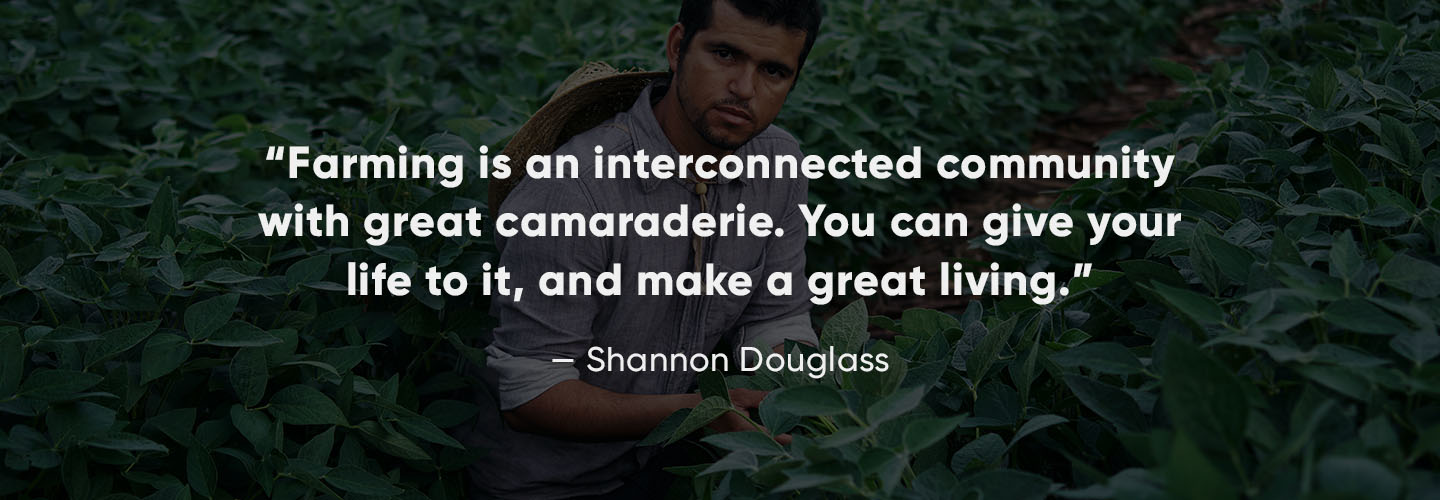In Search of a New Breed of Farm Workers

There’s a fascinating video on the website for Hands Free Hectare, a project of Harper Adams University in the U.K. It shows a tractor and combine about to harvest winter wheat in a typical farm field. The gearshift engages, the steering wheel turns, and the grain begins spouting into the cart running alongside. Yet there’s nary a farmworker in sight, which is Harper Adams’s vision of how farm fields will be planted, irrigated, fertilized, and harvested in the future. Or right now, on Hands Free Hectare’s robotic farm.
What’s not shown is the team of engineers, robotics experts, autonomous-vehicle specialists, and tech-savvy farm managers who are conducting this experiment and developing the technologies on which it depends and the people who will be managing farms like it in the future. As with so many other industries, the agriculture industry’s need for workers in a wide range of high-tech fields has become acute. If a would-be farm manager has skills in the STEM areas—science, technology, engineering, and math—she can practically write her own ticket.
Finding these workers is the quest of Shannon Douglass, the agricultural recruiter behind CalAgJobs.com, a managerial recruitment company that’s trying to fill a new breed of farm jobs right now. To do that, she’ll need to divert a portion of the next generation of highly educated workers away from flashy high-tech startups and into agriculture jobs, where new technologies are transforming the way crops are planted, cultivated, harvested, and marketed. “Agriculture is no different from any field,” says Douglass. “There has been a technological eruption, and these skills are in great demand.”
A new recruit
Douglass grew up in California’s fertile Central Valley, near Sacramento, participating in 4-H and Future Farmers of America activities, and then majored in agriculture at California State at Chico, where she also worked as a judge for livestock events and met her future husband, Kelly Douglass. After college, she taught animal and crop sciences at her alma mater, and long before CalAgJobs came along, she recruited students to become agricultural pest consultants.
The idea for her recruitment firm was born when Douglass was running the California Farm Bureau Young Farmers and Ranchers Committee, where she worked to connect young people with careers in agriculture. Soon, recruiters began contacting Douglass for recommendations, so, embracing the challenge, she and her partner, Miranda Driver, launched CalAgJobs in 2012.
Now she spends her days traveling the length and breadth of California, speaking with 4-H groups and college students, trying to lure them into fields that are being transformed in ways that go far beyond seasonal fluctuations or even climate change.
Supply and demand
“In farmtech today, it’s all about determining ripeness, mimicking the human touch in the harvest, and eventually replacing human labor in harvesting,” says Veronica Nigh, a labor economist with the American Farm Bureau (AFB). “Of course, achieving that goal has been three to five years down the road for a long time. That’s why agriculture needs to attract nontraditional students from the sciences and engineering, who don’t come from an agricultural background.”
And the demand is outstripping the supply. A study by Purdue University and the U.S. Department of Agriculture predicts an average of almost 60,000 agriculture job openings every year for graduates with bachelor’s degrees or higher in the fields of food, agriculture, renewable natural resources, and the environment—and just 35,000 or so graduates qualified to fill them. Half of those jobs will be in agricultural management and agribusiness, a quarter will be in science, mathematics, and engineering, and the rest will involve areas like sustainable food, biomaterials, education, communications, and governmental services.
A Purdue University study predicts almost 60,000 job openings every year for graduates with bachelor’s degrees or higher in the fields of food, agriculture, renewable natural resources, and the environment.

As demand for these kinds of workers increases, so do salaries. According to recruiter.com, salaries for farm managers in the U.S. run from $48,000 to $72,000 per year, depending on experience. In California, where the demand is highest, the jobs offer an average of $80,740 annually, depending on experience and the scope of the operation.
Douglass’s particular corner of the agriculture recruitment business is specialty farming—fruits, vegetables, and horticulture—and almost 90 percent of agriculture in California falls under that banner. So she’s recruiting marketing managers and farm managers, but also looking for biological talent, among plant scientists and agronomists. Says AFB economist Nigh: “Farming today requires precise tools. You need to be able to utilize and understand genetics and more sophisticated chemicals and more technology.”
That spells opportunity for CalAgJobs. “We provide three basic services,” Douglass says. “We’re hired by farms large and small to recruit greenhouse managers, farm managers, quality-control people, compliance, and sales jobs. We’re also a jobs-posting service for people who are connected to agriculture—hiring an office manager, for instance. And we received a $66,000 USDA Specialty Crop Block Grant to launch our internship program, to encourage companies and growers to recruit college students into the fold.”
Meanwhile, regulations are multiplying to ensure the safety of farm procedures and products, and the need grows to verify such boutique designations as “local,” “organic,” and “non-GMO.” So Douglass’s clients have also been asking her to find quality-assurance managers. “These roles need great attention to detail,” Douglass says. “They need a strong science background and an understanding of the production processes. And because it is a newer field, there is an even smaller pool of candidates with this sort of expertise.”
STEM cells
One generational element working in CalAgJobs’s favor: The tech side of farming is exploding at the same time as a new generation of tech-savvy workers is coming of age. But Douglass does hold one advantage: Many of those tech-savvy workers don’t want to spend their lives in a cubicle. “A lot of young people feel that way,” says Douglass, citing her observations in the field. “Agriculture is a tangible product, with a great goal—feeding people. There are very specific fruits of labor, plus the job allows you to spend time outside.”
Among the high-demand, high-tech jobs she targets: irrigation technicians. It used to be that farmers irrigated their crops on a strict schedule, regardless of the plants’ particular needs. Now various monitors—on the ground, in the sky, in outer space—allow farmers to dial into water needs on a per-field or even per-plant basis. Irrigation managers not only need to put these high-tech monitors to work; they need to understand crop genetics, in order to find the right drought-resistant plants, and the crop-development science of exactly how much to water, and when.
And as Hands Free Hectare suggests, there are other aspects of tech to consider, like robotics for planting, weeding, and harvesting, and the Web-based connectivity that links farmers with their customers. Hence the rise of another category Douglass recruits: farm marketing managers, who promote their employers’ sales to traditional markets and through newer media like Twitter, Instagram, and Facebook.
A growing business
Shannon Douglass spends most of her time recruiting those social media managers, drone pilots, irrigation experts, robotics savants, and process engineers whose services are increasingly in demand on farms. But it’s work she relishes: “Farming is an interconnected community with great camaraderie. You can give your life to it, and make a great living.”
“Farming is an interconnected community with great camaraderie. You can give your life to it, and make a great living.”—Shannon Douglass

Now she employs five people, all trying to meet her clients’ needs. In her particular area of recruitment, she estimates that jobs outnumber applicants about four to one. But she’s doing her best to close the gap. Website traffic from job seekers at CalAgJobs.com is on the upswing, and the company now handles a couple of hundred job placements every year. Whether she can ever satisfy the growing demand, however, remains an open question.
And just in case all that isn’t enough to do, Douglass and her husband operate the Douglass Ranch, a cattle, hay, and specialty vegetables operation in Orland, Calif., which they started in 2006. Meanwhile, her California Farm Bureau recruitment gig led to a deeper involvement with that organization; she now serves as its president. And she and Kelly have a son, Heath, now 11 years old.
If all this makes her sound somewhat oversubscribed, she is. There’s always another meeting to attend, and more minds to bend toward helping satisfy the world’s increasing demand for food, and the technologies that will help us meet it.